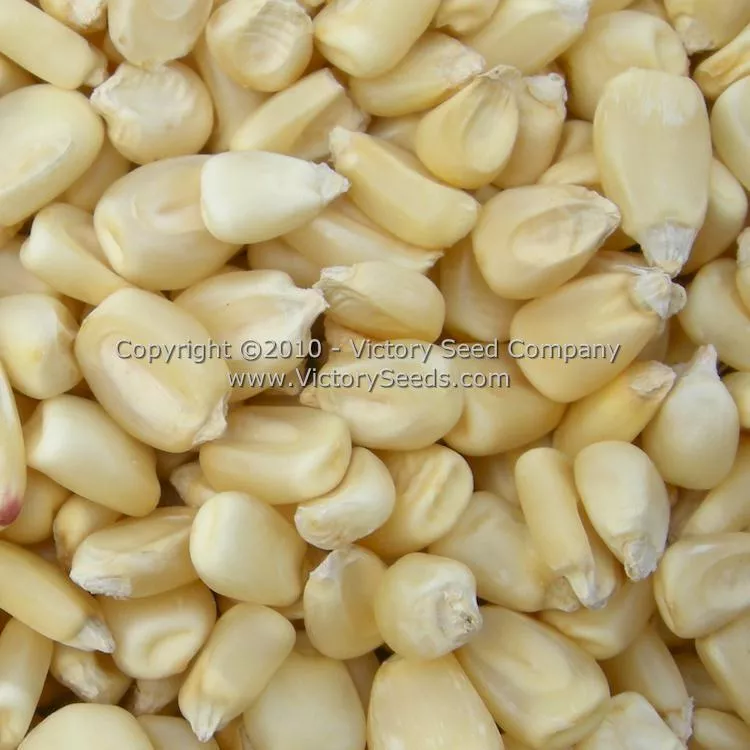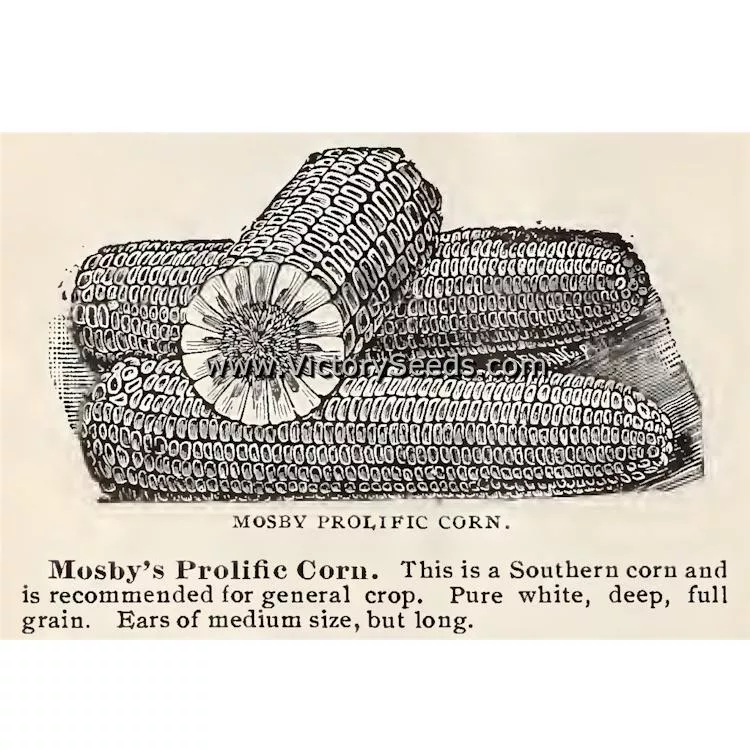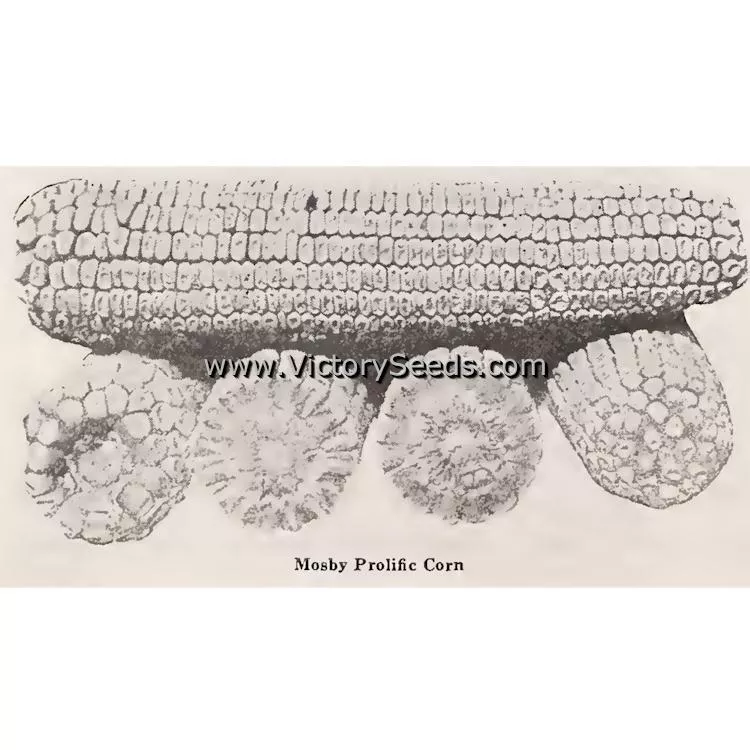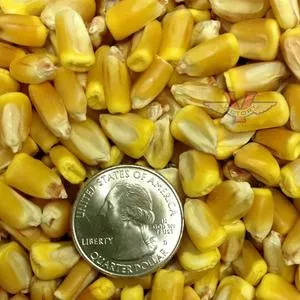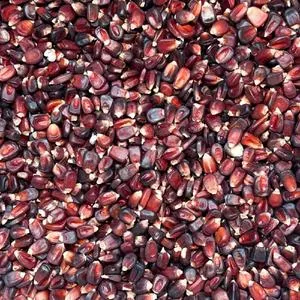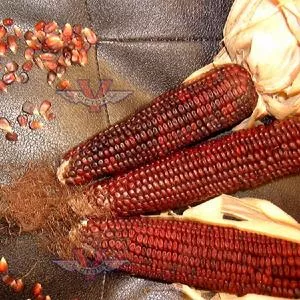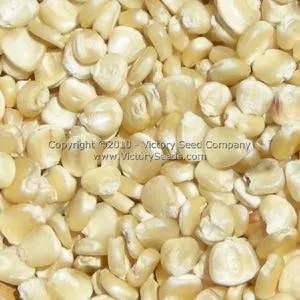


Mosby Prolific White Dent Corn
Zea mays subsp. mays
Price: $3.99
SKU: 31402611Choose a variant:
100 days - 'Mosby Prolific', also found incorrectly marketed as "Moseby" Prolific, is one of the old "prolific" dent corn varieties. Its stalks are sturdy and large, often growing ten to twelve feet in height, and generally bear two ears per stalk, but can develop up to four. The ears are eight to nine inches long and about six inches in circumference with kernels and cobs that are white in color.
Developed and originally introduced by J. K. Mosby of Lockhart, Lauderdale County, Mississippi in 1876,[1] by the early 1900s, most of the major Southern seed houses, as well as newspapers full of farmer's advertisements, were selling the seed. Although now fairly rare, 'Mosby Prolific' was once extensively grown for feed and silage; particularly in the South and Gulf States. Each ounce is approximately 110 seeds.
Genetic Classification: Open Pollinated
Planting Instructions:
Soil must be at least 65ºF to germinate. Be patient and do not plant too early or you will waste a lot of seed! Plant in full sun and keep it watered. Corn is a wind-pollinated plant. Plant in blocks several rows wide to ensure full ears.
Sow seeds about 1½ to 2½ inch deep, 3 to 4 inches apart, in rows spaced 24 to 30 inches apart. Thin to 6 to 12 inches apart.
Harvest Information:
Pick the ears for dry grain or decoration when the husks are dry and the kernels are hard enough that you cannot make a dent in them with your fingernail. Many people pick the ears too early when kernels are still soft. If this is done they shrivel up and shrink and their beauty is destroyed. They cannot finish maturing once they have been picked.
Even though the ears look dry, there remains moisture deep within the cob. If you were to enclose them in a box, the moisture would cause them to sour and mold. You may let them dry longer on the plants if neither weather nor predators are damaging them. Otherwise hang them up or lay them out in the open until they are completely dry inside.
Sow seeds about 1½ to 2½ inch deep, 3 to 4 inches apart, in rows spaced 24 to 30 inches apart. Thin to 6 to 12 inches apart.
Harvest Information:
Pick the ears for dry grain or decoration when the husks are dry and the kernels are hard enough that you cannot make a dent in them with your fingernail. Many people pick the ears too early when kernels are still soft. If this is done they shrivel up and shrink and their beauty is destroyed. They cannot finish maturing once they have been picked.
Even though the ears look dry, there remains moisture deep within the cob. If you were to enclose them in a box, the moisture would cause them to sour and mold. You may let them dry longer on the plants if neither weather nor predators are damaging them. Otherwise hang them up or lay them out in the open until they are completely dry inside.
Informational References:
- "Lessons for Members of the Boys and Girls Corn Club," Louisiana Extension Service, Circular Number 43, January, 1921.
- "Varieties of Corn," by E. Lewis Sturtevant, M.D., USDA Bulletin 57, Washington, D.C., 1899.
- "Descriptive Catalogue of High Grade Seeds," Otto Schwill & Co., Memphis, Tennessee, 1900.
Customer Reviews:
Do you have experience with this one? 📝 📣 Write a review!
★★★★★ It is the best tasting corn I've ever eaten.
By Valerie Maddox on May 16, 2015
By Valerie Maddox on May 16, 2015
My dad grew this when I was growing up. It is the best tasting corn I've ever eaten. I hate that you can't buy it anywhere - or any sort of corn that isn't sweet. If anyone grows this, I'd be interested in buying. I don't have the skill to grow anything, and I really don't have the space for corn.

